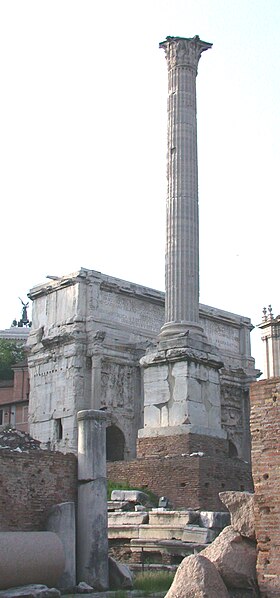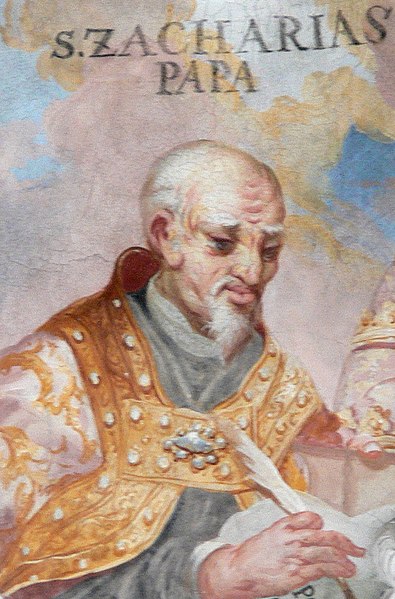The Byzantine Papacy was a period of Byzantine domination of the Roman Papacy from 537 to 752, when popes required the approval of the Byzantine Emperor for episcopal consecration, and many popes were chosen from the apocrisiarii or the inhabitants of Byzantine-ruled Greece, Syria, or Sicily. Justinian I reconquered the Italian peninsula in the Gothic War (535–554) and appointed the next three popes, a practice that would be continued by his successors and later be delegated to the Exarchate of Ravenna.
The Basilica of San Vitale in Ravenna, consecrated in 547, combines Western and Byzantine elements.
The Column of Phocas, the only extant public monument erected in seventh-century Rome by the Byzantines
Pope Martin I was abducted by Constans II and died in exile.
Pope Zachary was the last pope of Greek extraction and the last to seek imperial confirmation of his election.
Pope Martin I, also known as Martin the Confessor, was the bishop of Rome from 21 July 649 to his death 16 September 655. He had served as Pope Theodore I's ambassador to Constantinople, and was elected to succeed him as Pope. He was the only pope when Constantinople controlled the papacy whose election had not awaited imperial mandate. For his strong opposition to Monothelitism, Pope Martin I was arrested by Emperor Constans II, carried off to Constantinople, and ultimately banished to Cherson. He is considered a saint by both the Catholic Church and the Eastern Orthodox Church. He is the last pope recognised as a martyr.
Statue of Martin I in Santa Maria della Consolazione church, Todi, Italy
Portrayal at St. Martin the Confessor's Church in Moscow
Tondo of Martin I at the Basilica of Saint Paul Outside the Walls







